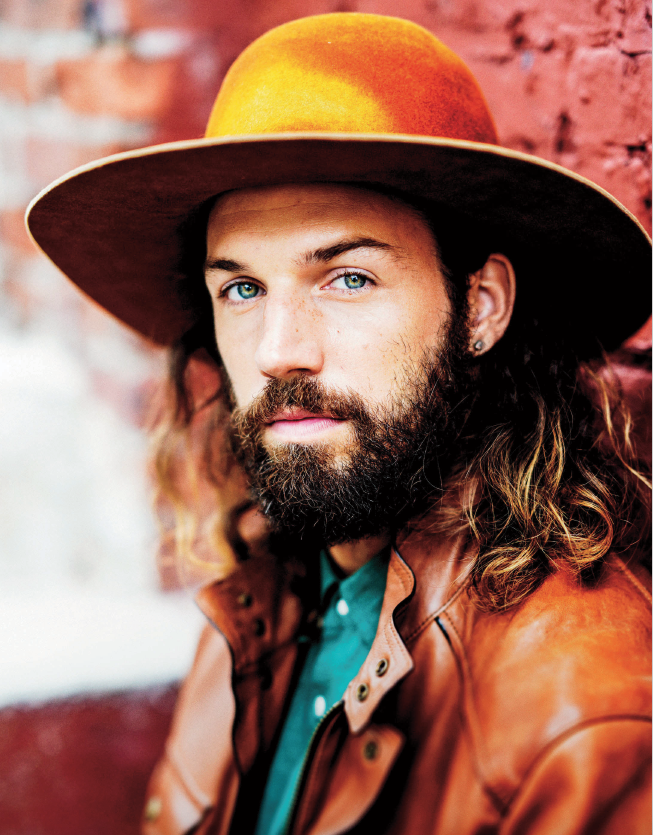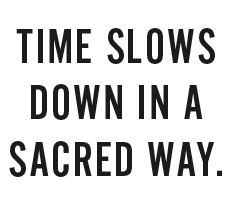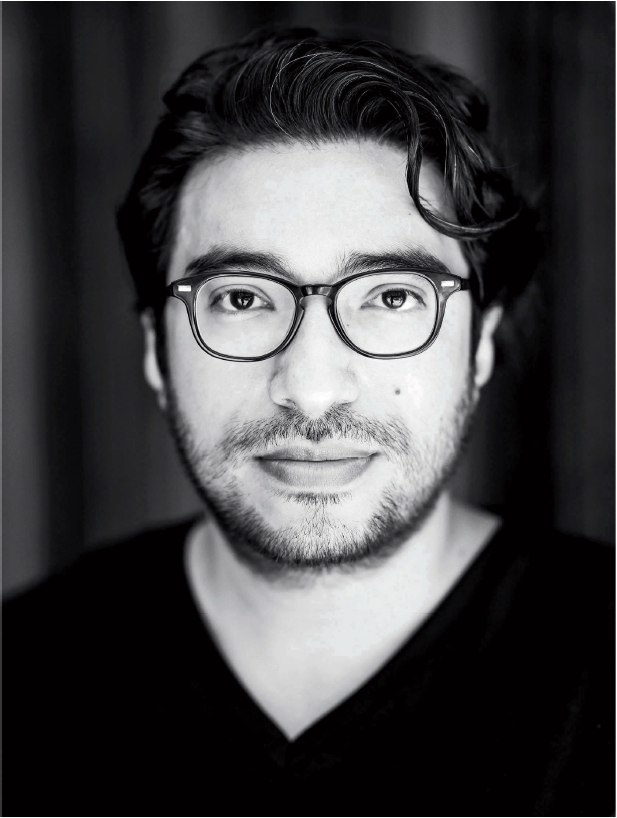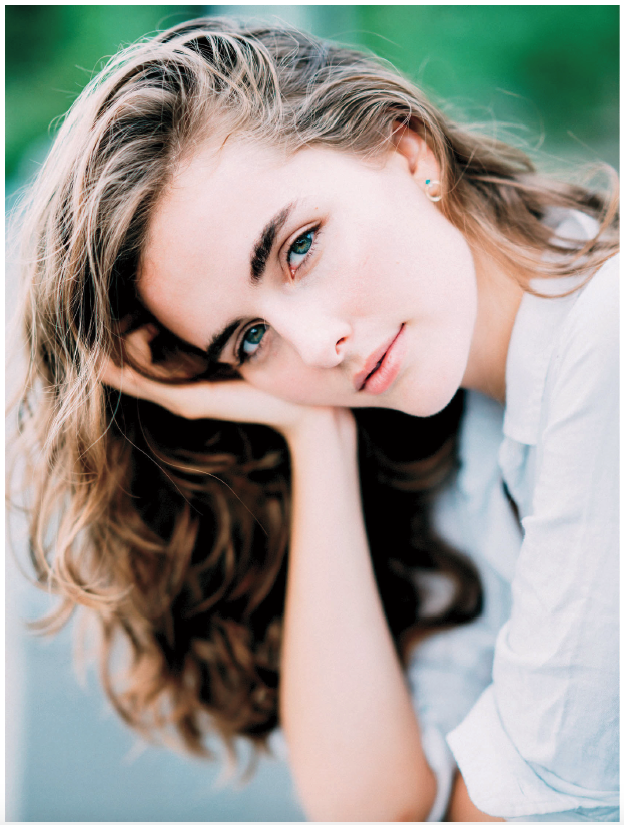The following is an excerpt from Authentic Portraits by Chris Orwig.

“The purpose of art is to stop time.” —Bob Dylan
The most memorable portraits are simple, strong, and true. They convey personality, presence, emotion, values, and ideals. They awaken our senses and make us feel. They go beneath the surface and remind us what it means to be alive. In short, they are authentic and real.
This is authentic portraiture. And this type of portraiture is just as much about you, the photographer, as it is about the subject. It’s about having your own vision and voice for capturing and conveying the inner essence of who someone really is.
In Authentic Portraits, we are going to explore how this is done. Whether you are new to portraiture or you just want to add this skill set to an already flourishing craft, I hope this book is a helpful guide. It won’t provide all the answers, but it will help you ask the right questions, and it will make you want to take the journey yourself.
Before we begin, a word of wisdom. Photography is among the easiest of art forms to practice, but one of the hardest to achieve your own unique vision, voice, and style. Taking a photograph is easy, but making a meaningful portrait requires a broad set of skills. And authentic portraiture isn’t something you master but something you pursue. Kind of like healthy eating and fitness—it’s a lifelong pursuit rather than something you do once and cross of the list.
And a significant part of capturing better and more authentic portraits is learning how to become more authentic yourself. Becoming your true, unfiltered, and best self is no easy task; that’s why so many books, seminars, and conferences address the topic. Plus, becoming more authentic is connected to improving almost every aspect of life—and so it’s relevant to anyone who wants to live a more amplified life.
Yet, as photographers, we have a multifaceted need for authenticity. We need to be our best, authentic selves while we ask others to do the same. Because photography is a craft, this can be quite a challenge. Clearly, learning the fundamental techniques of exposure, focus, and composition is essential, but authentic portraits aren’t made by cameras alone. They’re the result of the collaboration and connection between the parties involved.
COLLABORATION AND MYSTERY
Every good portrait is a collaboration between the subject and the photographer. The photographer must learn not only how to use her equipment well, but how to see and how to be—how to be present, mindful, open, trustworthy, inquisitive, curious, and kind. The portrait photographer must also learn how to look past the surface and search for hidden truths.
Portrait photography is about the active search for the magnificent in the mundane, and it’s about searching intently for beauty, strength, and depth. Most of all, authentic portraiture is about capturing the inner essence and infinite spirit within us all.
So when I capture a portrait, I look for what can’t easily be seen: I search for inner strength, silence, and soul. I hope to find hidden beauty, tenacity, or resolve. I want to find the person and personality under the facade. I aim to discover something that is real, whether that’s fun, funny, wistful, or wise.
All the while, it’s helpful to ask, “How can I craft and convey the inner story of who this person is?” While we search for this inner narrative, we also must consider light, space, place, color, and style. When all these elements converge, time slows down in a sacred way. In these moments, the rest of the world fades and I press the shutter release with a heart full of hope. Hope that the camera captures what I feel. Hope that the resulting image honors the person standing before my lens.

Capturing portraits this way requires a combination of observation, aspiration, serendipity, and skill. That’s why it takes time to cultivate this craft. What looks nonchalant is more calculated than it seems. You must work with discipline, focus, and drive, yet at the same time be open to the fact that portraiture is less about perfection and more about letting the magic unfold.
Portraiture is a mysterious and unpredictable craft. The best portraits deepen this mystery rather than solve it away. As I’ll discuss later, great portraits ask more questions than they provide answers. Those are the portraits that truly succeed. The portraits that fail often do so not because they say too little but because they say too much about all the wrong things—like clothes, hair, and looks, or light, shape, and form.
Making successful portraits requires balancing the externals (light, directing, clothes, looks) and the inner narrative of the subject (personality, identity, essence, soul). If one element is out of balance, it can tip the scale—a huge and exaggerated grin can ruin the entire frame, while a slight smile might add intrigue. With this balancing concept in mind, portrait photographers can learn much from other creative fields, especially those that strive to explore the inner landscape of life with artistic tact and skill. For example, let’s look at how acting can inform the way we make portraits.

LOOKING DEEPLY
The legendary actor Dustin Hoffman gives this advice to young and aspiring actors: “Never practice your lines in front of a mirror!” He protests against reducing the art of acting to how it looks. Hoffman argues, “Acting isn’t what you say or what you look like, but what you feel.” It’s not what we see on the outside but what wells up from within.
So it is with portraiture. Visual appearance matters, but the true aim of a portrait isn’t looks; it’s the human spirit within. The portrait artist who learns how to find that inner wellspring of abundance will go far because of how they connect, how they create, and how they learn and grow. That growth will be reflected in their frames.
Meanwhile, the photographer who continues to capture only the surface will stagnate and wonder why their photographs aren’t getting better over time. Plus, once you get out of the habit of looking deeply, the visual interest of the outside world begins to dominate your view, and you forget how to truly observe and connect. This book aims to reverse that trend.
The good news is that what we have forgotten or lost can be quickly regained. When it comes to rekindling our sensory and observational skills, it helps to first look within ourselves to get the juices flowing, and then to look to our subjects. This idea of looking within isn’t just good form; it’s essential if we want to create something more than shallow frames. And while we must search deeply, we need to display what we find with a light touch so that our frames aren’t filled with the tension and heaviness that comes from trying too hard.

